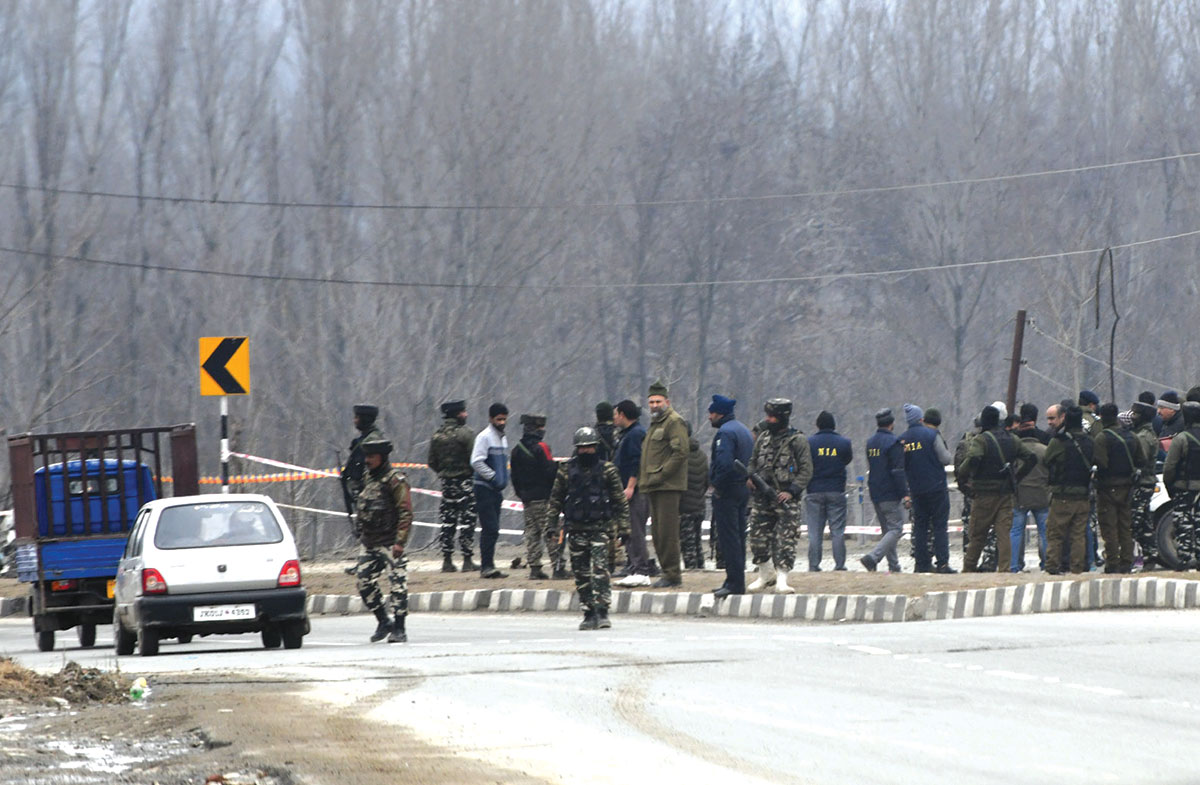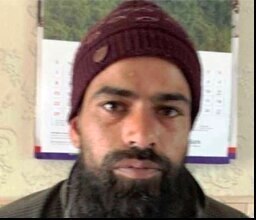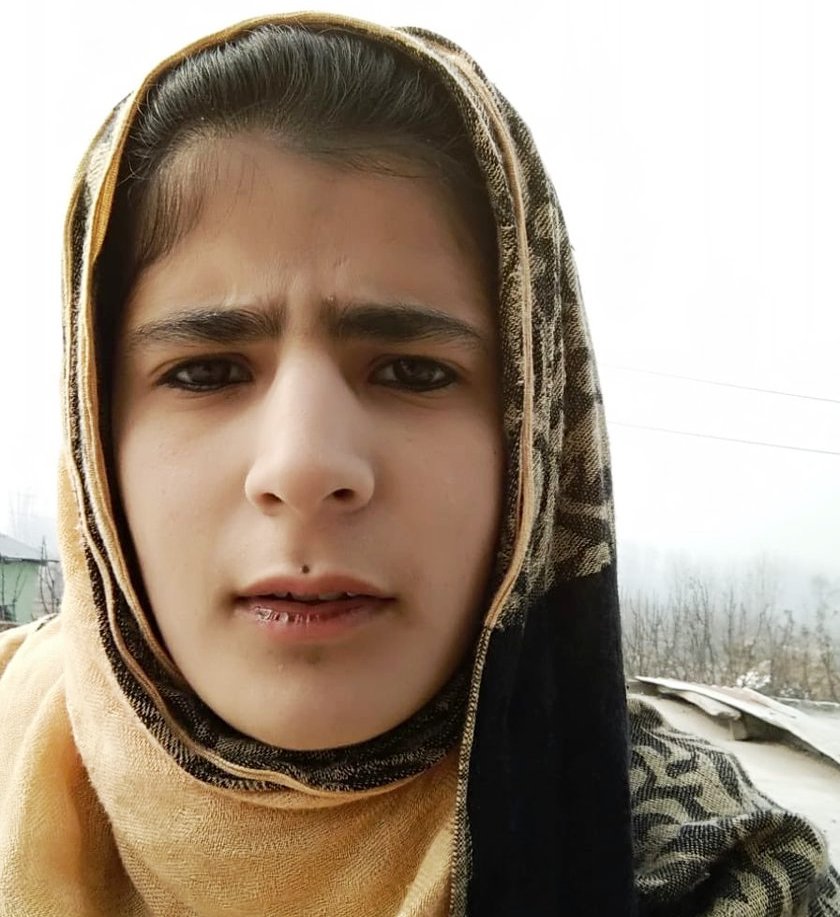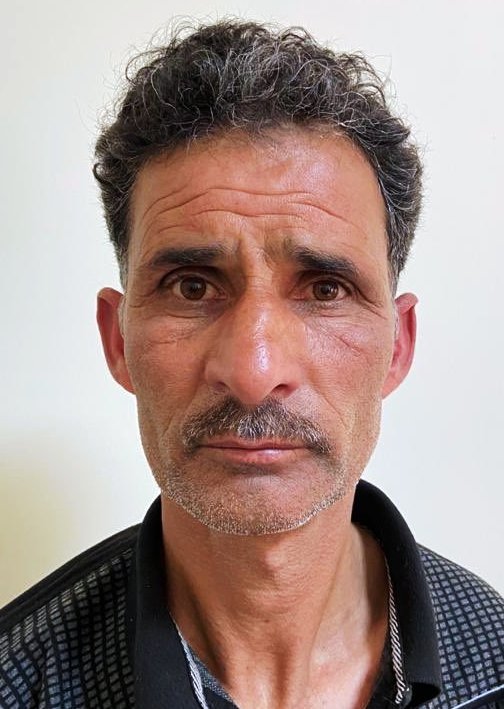In an investigation that took more than 28 rims of paper to be written upon, the federal investigator has finally seven of the 19 accused in its custody. What is interesting is that the NIA got almost everything from a cell phone that nobody in the security grid touched for almost 10 months after its recovery from the encounter site where the key accused was killed, reports Tahir Bhat

Prime Minister Narendra Modi paying floral tribute to the CRPF men killed in Lethpora blast.
One of the motives that the planners of the February 14, 2019 Lethpora attack on CRPF convoy had was to bring India and Pakistan to war, according to the 13800-page charge sheet that National Investigation Agency (NIA) filed last week in a Jammu court.
The planners had actually succeeded as the war almost broken out. India resorted to an airstrike on Balakote and in retaliation Pakistan Air Force also crossed the Line of Control (LoC) and bombed at various places. In fact, the rival air-forces engaged in dogfights in which India lost a helicopter and a fighter aircraft. Apparently, it was the intervention by Riyadh and Dubai –on Donald Trump’s initiative – that the crisis was managed and the IAF pilot, captured by Pakistan, was flown home, within a day after being captured.
War apart, the charge sheet says it has collected a lot of evidence from the very infiltration of the master planner, Mohammad Umer Farooq to the production of the two huge Improvised Explosive Devices (IED) weighing almost 200 kgs. It says it has collected images of the various stages of the planning and production and retrieved recorded audios conversations that require more than 14 hours to listen.
The Jackpot
What is interesting, according to the details published by various media, the NIA had no clue for almost 10 months after the case was transferred to it. Then they got a damaged Samsung S9 phone that was with the Jammu and Kashmir Police for almost seven months after it was recovered from an encounter site. As the forensic experts worked on the phone, NIA actually hit the jackpot. It was Umer Farooq’s phone, who had recorded almost everything in it ever since he infiltrated into Jammu and Kashmir using the International Border in Samba somewhere in April 2018.

Site of Lethpora blast after a suicide bomber hit a CRPF convoy killing 40 CRPF personnel. KL Image: Special Arrangement
The phone was recovered from the encounter site at Nowgam (Budgam) where Farooq was killed on March 29, 2019. The damaged phone remained with the Jammu and Kashmir Police till December 2019, when somehow it reached the NIA. Two months later, the first arrest took place in the case.
India Today reported that after several attempts to decipher and decode the phone failed, the damaged phone found its way in Nowgam Police Station Maal-khana (warehouse). “Later, when Centre handed over the probe to NIA, the phone was sent to the Indian Computer Emergency Response Team (CERT-In) by J&K Police on recommendations of the NIA,” the report said. “This is where the agency got hold of 100 videos and photographs, which were all deleted after being sent to Umar Farooq’s uncle Maulana Mohammed Ammar via WhatsApp.”
Umer Farooq, according to NIA, was the son of Ibrahim Athar, Jaish-e-Muhammad founder, Masood Azhar’s brother, who allegedly hijacked the IC-814 from Nepal in 1999 paving way for the release of Masood Azhar. The phone fetched the investigators tons of audio exchanges between Umer and his uncles – Abdul Rouf Asghar and Ammar Alvi.
A Rs 10 Lakh Project

NIA team examining the blast site at Lethpora.
NIA charge-sheet says it has a voice recording of Farooq asking his uncles Rouf Asgar and Ammar Alvi to deposit money in a bank account in Pakistan. Rs 10 lakh is deposited in two accounts in the name of Umer Farooq in Allied Bank and Meezan Bank of Pakistan, according to the charge-sheet. How this money reached Kashmir is something that NIA is still seeking answers for.
“The chat reveals a discussion on the cost of each component of the IEDs and the money spent in executing the attack. The chat, in Urdu, pegs the cost of at IED at Rs 570000,” The Indian Express reported. “Another chat shows that from this fund, Rs 5.7 lakh is spent on preparing two IEDs, later fitted in a Maruti Eeco vehicle. Pulwama resident Adil Ahmed Dar drives this vehicle and explodes it near a CRPF convoy on the Jammu-Srinagar highway on February 14, 2019, killing 40 CRPF personnel.”
Cell Phones

Adil Ahmad Dar
The NIA has already matched the voice of Asgar from these chats with that of his voice samples available via open-source, the report added. “Umer Farooq’s Samsung phone had details of the entire planning in the form of chats, voice packets and pictures,” the newspaper quoted an NIA officer saying. “When the Forensic Science Laboratory gave us the data, it took us 14 hours just to listen and analyse the voice packets. Since all had been deleted after the attack, the retrieved data came in chronological order. It took a massive amount of effort to sift through it, pick relevant data and match instructions with action and replies.”

Shakir Ahmad Magrey
The phone gave a telltale detail of the Umer Faroq’s activities. The charge-sheet has mentioned evidence of a batch of five Jaish operatives, including Umer Farooq, having crossed over to India in April 2018 using a tunnel at the International Border in Samba sector. “They (phones) had photographs of every step of the planning, from infiltration (into India) to the execution. We even have photographs of what looks like a tunnel (that was) used to infiltrate into India. There are photographs of all those involved in the planning, the car used, explosives, IEDs and even videos of the multiple rehearsals by the attackers before shooting the final video of attacker Adil Ahmed Dar as a Fidayeen. All these were sent to Pakistan,” an NIA officer was quoted saying.
As they infiltrated, they were received by Pulwama resident Ashaq Ahmed Nengroo, waiting for them near Bein River in Jammu, and transported them to Kashmir in his truck. Interestingly, the group carried 12 Kgs of RDX with them, according to NIA.

Sajjad Ahmad Bhat
In Pulwama, Umer Farooq took over the outfit leadership with Mohammad Kamran, Mohammad Ismail alias Saifullah and Qari Yasir (all Pakistan residents), and local associates Sameer Dar and Adil Ahmad Dar. They started planning the operation, soon after, the NIA said.
It was not Farooq’s phone alone, however. The phone that Umer’s colleague, Kamran carried also fetched some voice packets. “They were discussing how the attack could precipitate a war between India and Pakistan and help them in infiltrating more terrorists,” one report said.
Accused And The Bomb

Mohammad Abbas Rather
The charge-sheet was filed against 19 accused of whom six are dead, seven are in custody and the remaining six – Masood Azhar, Rouf Asgar, Ammar Alvi (three brothers residents of Pakistan) and three local militants – are still at large.
Four local residents Shakir Bashir, Insha Jan, Peer Tariq Ahmad Shah and Bilal Ahmad Kuchey are among accused. They all are in NIA custody. Insha and Peer Tariq are father and daughter and they were arrested for offering their house to the Jaish for recording the video of Adil Dar, in anticipation of the attack. The video, part of the outfit propaganda material, according to NIA did surface on social media quickly after the attack. India Today has reported that suicide bomber, Adil Dar could not speak better and the video makers used Sameer Ahmad Dar’s voice in the background as Adil lip-synched. Besides, the NIA has recovered a photograph showing Insha with Umer Farooq carrying a gun.

Mohammad Umer Farooq with his uncle Moulana Ammar
Shakir Bashir, according to NIA, was “doing reconnaissance of movement and deployment of security forces on Jammu-Srinagar highway” since December 2018. Mudasir Ahmad Khan has been accused of arranged Gelatin sticks and handed them over to Shakir…(who) “collected the explosive material — RDX, Gelatin sticks, Aluminium power and Calcium-Ammonium Nitrate – and stocked them at his house for making the IED.”

Insha Jan
Sajjad Bhat, according to NIA charge-sheet purchased a Maruti EECO car for the attack and allegedly kept in the front yard of Shakir’s house. Waiz-ul-Islam ordered 4 kg aluminium powder from his Amazon account on Mohammad Ismail, alias Saifullah’s directions and gave it to him, the charge sheet says.
Budgam resident, Mohammad Iqbal Rather, was arrested in July for facilitating the movement of Umar Farooq. Bilal Ahmed Kuchey has been accused of obtained high-end phones for Jaish, one of which was used for filming the attack.

Tariq Ahmad Shah
The investigators have told reporters that Adil Ahmad Dar had offered his service to become the suicide bomber much before the project was planned. The NIA charge-sheet says that a total of 35 Kgs of RDX was used in the two IED’s weighing 160 kgs and 40 kgs, along with ammonium nitrate, gelatine sticks and aluminium powder.
By early February 2019, the NIA has said Umar, Sameer Dar, Adil Dar and Shakir Bashir had readied the IED. By February 6, 2019 morning when the attack was to happen – it was changed because of snowfall on the highway, the car was explosive-laden. On February 14, 2019, as the routine resumed on the road, the NIA accused Shakir of driving Adil up to the highway, after which he took charge for the remaining 500 meters. By afternoon, the mayhem splashed the TV screens across the world.
Though the phone revealed the plot, it did not offer anything physical because most of the militants who were responsible for the attack had been killed in the routine encounter. In early February 2020, Hindustan Times reported the NIA trio – IGP Anil Shukla, DIG Sonia Narang and SP Rakesh Balwal, found a photograph of Shakir Bashir Magray, in Farooq’s phone. “This was when NIA realised that it could have hit a jackpot,” the newspaper said.
Magray ran a furniture shop near the blast site. “During interrogation, Magray disclosed details of the conspiracy, including how Farooq was the one running the show and giving directions to them,” reported the newspaper. “Six more persons — Insha Jan, her father Peer Tariq Ahmed Shah, Waiz-ul-Islam, Mohammad Abbas Rather, Mohammad Iqbal Rather and Bilal Ahmed Kuchhey — who played in a role in providing logistics or shelter to Pakistani terrorists, were arrested in the following months.”
Beyond Court
Of the 19 accused, six each are dead or absconding. The case will run again the seven who are in detention. But the course of the case is unlikely to stay in the courtroom. The NIA is readying to send Letter Rogatories (LRs), a judicial request seeking information from abroad, to Pakistan, according to Hindustan Times. The case is likely to echo in the next meeting of the Paris-based Financial Action Task Force (FATF) that is the world watchdog on detecting terrorism and penalising them by making credit costly and investments difficult.

An IAF MI-17 fighter helicopter crashed in Budgam on February 27, 2019.
Pakistan is on the “grey list” since 2018 and has been given an action plan for implementation to return to the white list. With multiple extensions, the 39-member body has been concerned over the sluggish pace of implementing the agenda. Recently, two key bills that the Pakistan National Assembly passed were not upheld by the Opposition dominated senate. Now Islamabad will be voting for the twin bills – linked to FATF plan, in a joint session. It earlier notified and proscribed 88 individuals including Dawood Ibrahim, Zaki ur Rehman Lakhvi, Hafiz Sayeed, Masood Azhar and a number of Aghanistan Taliban leaders on, what Pakistan Foreign Office said, on basis of a 5-years old UN resolution.
Though China and Turkey have always been helping Islamabad in the FATF, the Lethpora is being invoked to give the black-listing yet another push. “With the NIA charge sheet providing more ammunition to the Indian government to corner Pakistan at the FATF, security officials said that New Delhi will build a strong case to blacklist Pakistan at FATF,” The Week reported.
from Kashmir Life https://ift.tt/3jwe8OQ
via IFTTThttps://kashmirlife.net
No comments:
Post a Comment